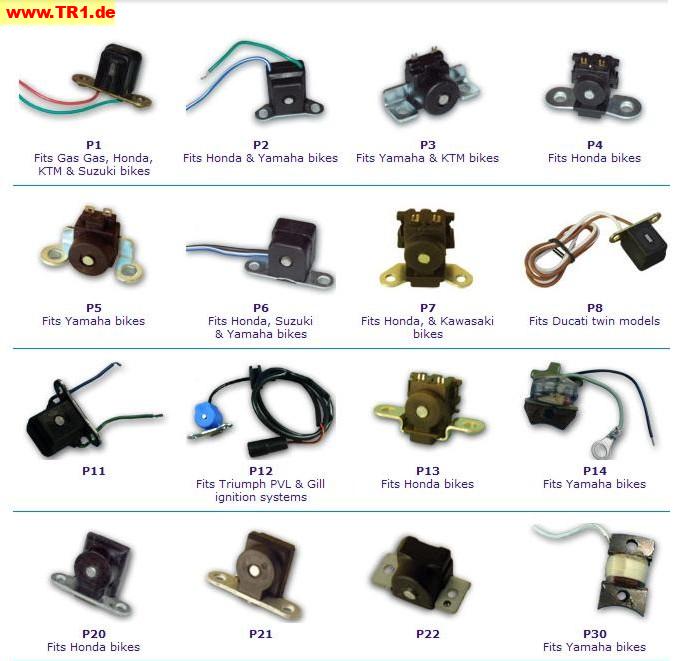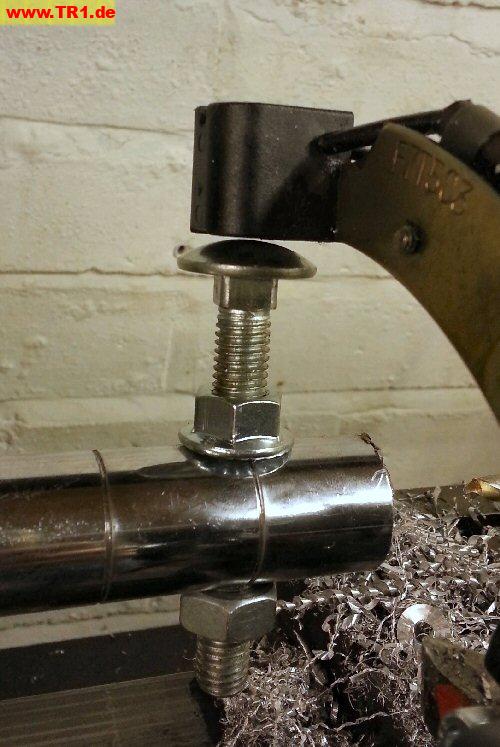Post by JohnB on 22.04.14 at 11:33:27
OK..
After much looking around, I find the pick-up coils (induction type) are on a bracket, made by Mitsubishi electric for Yamaha.
You can see the part in the attached photo.
No markings on the front, on the rear it says "F7T503" and Mitsubishi mark and then "71"
After research, I find it is available from Yamaha Japan.
Part number 4x7 81670 20(00)
Price in UK Pounds is £219 + vat = £263.21
-------------------------------------------------
Now, many options, I can try to rebuild existing ones with new pickups from ignitech, maybe 75 euros, or, now I have part numbers, I can try to find someone somewhere with "new old stock" maybe 150 euros, or, I can buy this part, factory direct, warranty... and after all is going inside the engine, and crucial part for well running of the engine, so I sit in car park for 5 minutes having a smoke and think assholes, buy original part direct from Yamaha.
ETA from Japan mid May.
So, when it comes will fit it, and take accurate readings of coil resistance from new, AND take correct AC voltage readings at cranking speed, and picture of oscilloscope trace...
Because this is half the battle to me.
I know from Ignitech TCI unit requires 0.7 V to trigger.
I know from Haynes book of lies pick up coils are supposed to be 124-186 Ohms, mine were 166.
I do not know what voltage pick up coils are supposed to generate at cranking speed, at tickover, or at a couple of thousand RPM...
So to me only way to get this right is to buy factory new, and measure.
Watch this space.

After much looking around, I find the pick-up coils (induction type) are on a bracket, made by Mitsubishi electric for Yamaha.
You can see the part in the attached photo.
No markings on the front, on the rear it says "F7T503" and Mitsubishi mark and then "71"
After research, I find it is available from Yamaha Japan.
Part number 4x7 81670 20(00)
Price in UK Pounds is £219 + vat = £263.21
-------------------------------------------------
Now, many options, I can try to rebuild existing ones with new pickups from ignitech, maybe 75 euros, or, now I have part numbers, I can try to find someone somewhere with "new old stock" maybe 150 euros, or, I can buy this part, factory direct, warranty... and after all is going inside the engine, and crucial part for well running of the engine, so I sit in car park for 5 minutes having a smoke and think assholes, buy original part direct from Yamaha.
ETA from Japan mid May.
So, when it comes will fit it, and take accurate readings of coil resistance from new, AND take correct AC voltage readings at cranking speed, and picture of oscilloscope trace...
Because this is half the battle to me.
I know from Ignitech TCI unit requires 0.7 V to trigger.
I know from Haynes book of lies pick up coils are supposed to be 124-186 Ohms, mine were 166.
I do not know what voltage pick up coils are supposed to generate at cranking speed, at tickover, or at a couple of thousand RPM...
So to me only way to get this right is to buy factory new, and measure.
Watch this space.




